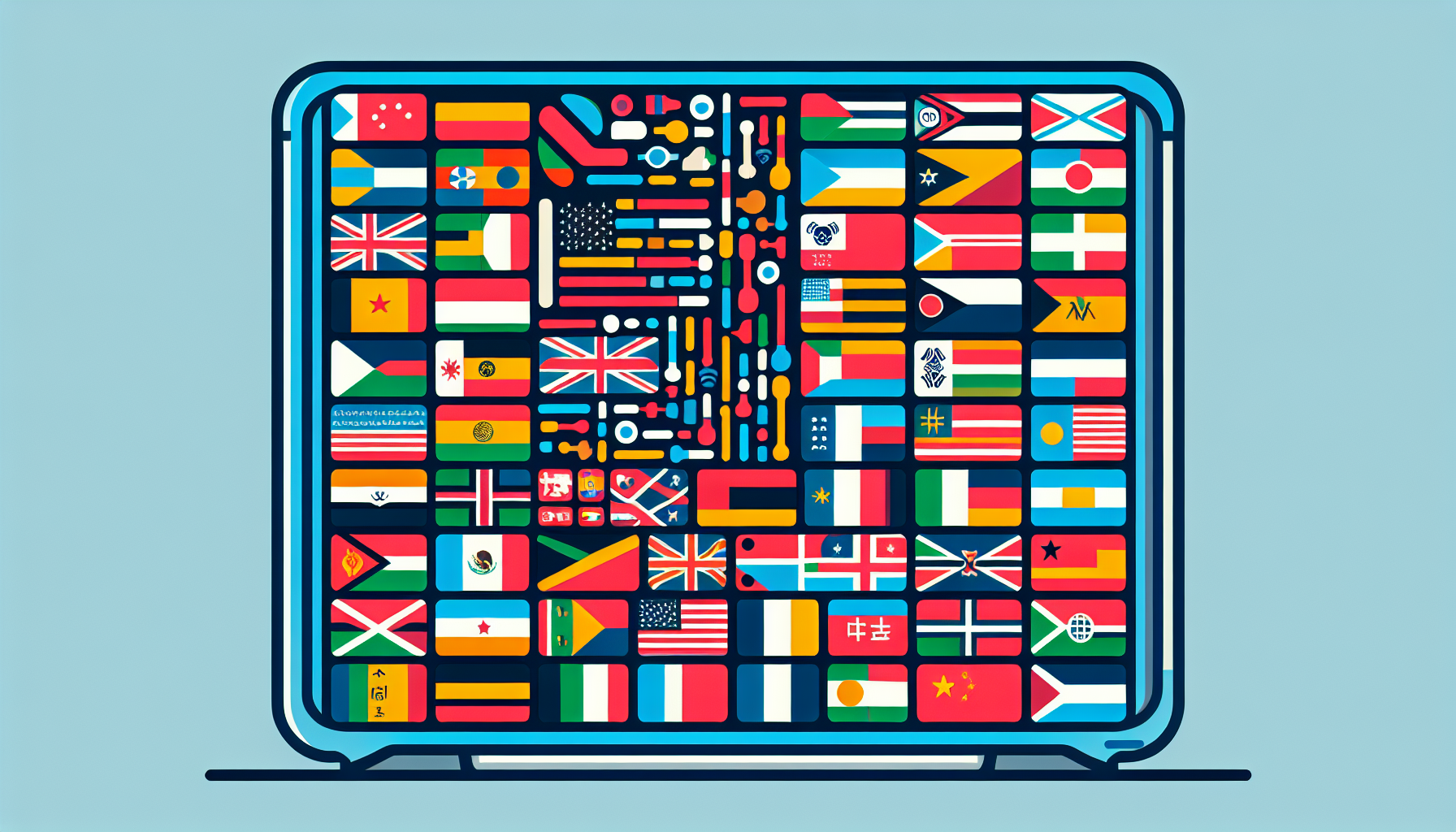
In today's era driven by a constant evolution of technology, enterprises add to their competitive advantage by using, amongst other tools, AI Receptionists. These innovative digital assets bring about a revolution in the traditional business communication environment, showing an ability to handle multiple languages and accents with relative ease.
AI receptionists, also known as virtual agents, utilise solid programming and pulse-check algorithms to accurately adapt their responses. The underlying Natural Language Processing (NLP) technologies and voice recognition systems are the pillars that help AI receptionists understand, interpret, and respond to different languages and accents.
The seamless integration of these receptionists into business communication gating points is evidence of the importance of speaking customers’ language. This significantly improves the user experience, ultimately impacting the bottom-line positively. Also, this unlocks the door to reaching a more global audience, all through the voice of an AI.
Gone are the days where businesses were limited by language barriers. With the advent of AI receptionists, companies can now engage with their customers in a human-like conversation, despite the difference in language or accent. This truly embodies the adage, "The Customer is King", as businesses can now provide personalised service worldwide, without losing the essence of communication.
In the grand scheme of things, AI receptionists' capability to handle multiple languages and accents is an essential step forward in rendering the gap between consumer and business communication obsolete.
In the following sections, we will delve into the technology behind AI receptionists, their real-world application, and how they handle different languages and accents seamlessly.
In the contemporary landscape of global business, the ability to communicate effectively with customers from diverse linguistic backgrounds is indispensable. This challenge is brilliantly met by the advent of artificial intelligence (AI) powered receptionists. These AI receptionists do not just enhance customer engagement but also effectively handle multiple languages and accents, playing a pivotal role in establishing seamless communication with a global customer base.
Built on advanced technologies such as Natural Language Processing (NLP) and Machine Learning, AI receptionists can comprehend, interpret and respond to customer queries across many languages. Continuous learning and improvement are intrinsic to their design, enabling them to effectively understand and adapt to varying accents overtime.
The sophisticated speech recognition and synthesis systems of AI receptionists work concurrently to discern diverse dialects and accents. This ensures that no matter where the customer is from, their queries are understood accurately, and responses are conveyed in a language they can comprehend.
Beyond mere translation, AI receptionists are equipped to understand context, sentiment, tone and the intricacies of conversation. Allowing them to respond appropriately, thereby cultivating a personalized customer interaction irrespective of the language and accent. As businesses strive to extend their reach worldwide, these multilingual support capacities of the AI receptionists enable them to cater to a far-reaching global audience without any communication barriers.
Organizations using AI receptionists that support multiple languages enjoy a competitive advantage, as they can provide continuous, round-the-clock service to customers worldwide. Moreover, overcoming language and accent barriers paves the way for better customer satisfaction, fostering deeper business relationships facilitating growth and expansion.
AI receptionists are evolving with continuous enhancements in their language processing abilities. Today, there's a unique feature they possess - the ability to discern and understand a multitude of accents from around the globe. This is particularly crucial in an increasingly global and multicultural environment, where every individual's voice, regardless of their accent, needs to be understood clearly.

These AI receptionists are equipped with Natural Language Processing (NLP), a subfield of artificial intelligence, that deals with the interaction between computers and humans. NLP enables these systems to understand, interpret, and generate human speech in a valuable and meaningful way. They are trained on diverse datasets of spoken language, ensuring they have exposure to a wide range of accents, dialects, and speech patterns.
Moreover, AI receptionists take this a step further with accent understanding. This particular feature is often bolstered through Machine Learning (ML) techniques like accent classification and speech recognition modeling. Accent classification helps the AI identify the accent category a speaker belongs to, enabling better understanding and interpretation of their voice and speech. Meanwhile, speech recognition modeling simplifies spoken language for the AI by breaking it down into smaller, understandable components.
As a result of these strategies, AI receptionists can cater to a broader audience, offering superior service by patiently understanding each caller and providing relevant responses, irrespective of their accent. This not only reduces the scope of misunderstandings but also ensures a smoother communication process, a feature that is crucial in today's global work environment.
The potential applications of accent understanding in AI receptionists are vast. From customer support in international businesses to multilingual telecommunication services, AI receptionists are leading the charge in making universal communication a reality.
Understanding and interacting in multiple languages and accents is no minor task, even for humans, let alone machines. But, as we venture deeper into the era of artificial intelligence (AI), highly sophisticated language-processing abilities are being mainstreamed into the sphere of AI receptionists. This miracle, capable of transcending lingual boundaries, relies heavily on advanced technologies, such as speech recognition and AI algorithms.
The core technology that drives these AI receptionists is Natural Language Processing (NLP). NLP is an intersection of artificial intelligence, linguistics, and computer science, designed to interpret, understand, and respond to human language in a valuable way. NLP primarily breaks down the language barrier by extracting meaning from the user's statements, regardless of the language or accent used.
Additionally, speech-to-text conversion plays a pivotal role in understanding different languages and accents. This technology transcribes spoken language into written words, allowing the AI to process and understand the user's intent. Advanced speech-to-text solutions employ machine learning and are trained on large sets of data, enhancing their ability to recognize and adapt to a wide array of accents and dialects.
The final lever that allows AI receptionists to handle multiple languages and accents is the implementation of machine translation. Acting beyond mere literal translation, modern AI capitalizes on neural networks to comprehend the context and nuances of the spoken words. This enables the AI to accurately translate the user's language into one that it comprehends and vice versa, thus bridging the linguistic divide effectively.
In conclusion, the wizardry of AI receptionists handling multiple languages and accents is underpinned by an intricate blend of advanced technologies, primarily NLP, speech-to-text conversion, and machine translation. These technologies mechanize understanding, processing, and responding to spoken words in any language or accent, bringing a new wave of innovation to customer service and broadening the reach of businesses beyond language barriers.
The emergence of Artificial Intelligence (AI) has revolutionized various sectors, including customer service. Specifically, AI receptionists now offer businesses a much-needed language versatility. These receptionists can handle multiple languages and accents, aligning with the globalized nature of modern commerce.
One striking success story in this regard is Poly AI. With the ability to understand nearly 100 different languages, the Poly AI receptionist ensures businesses can cater to clients across the globe, irrespective of the language barrier. Furthermore, this advanced AI model's accent versatility and understanding of dialectal nuance allows the provision of a tailored and localized customer service experience.

Another notable example includes the integration of Zoom.AI at the multinational technology company IBM. This AI receptionist helps IBM deal with international clients and partners by bridging the language gaps. The AI can converse and respond effectively in multiple languages, making communication smooth and effective despite diverse language backgrounds.
Virtual receptionist Linc.AI employed by the multinational fashion hub, Zara, is another testament to the effective utilization of multilingual AI receptionists. By recognizing and interacting efficiently in multiple languages and accents, Linc.AI eradicates potentially complicated communications with customers across the world.
In all these real-world applications, AI receptionists ensure businesses are accessible, inclusive, and global. Their ability to handle multiple languages and accents not only aids in global expansion but also increases customer satisfaction by providing unprecedented and seamless communication.
Indeed, multilingual AI receptionists are becoming a cornerstone of effective, global customer service strategies.
As exhilarating as the advancements in artificial intelligence (AI) are, they are not without their share of challenges. In particular, AI receptionists' ability to handle multiple languages and diverse accents is still a considerable hurdle. The quirks and intricacies of human language make exact translation and understanding an ongoing issue.
Accent variation greatly complicates the tasks of AI. Even within a single language, there are broad discrepancies in pronunciation and emphasis that AI often struggles to interpret. Individuals speaking the same language but in different accents could be identified inaccurately, leading to a failure to communicate effectively. AI's capability to understand and interpret these unique linguistic features is still a work in progress.
Moreover, languages continually evolve, with new words, slang, and expressions introduced regularly. This dynamic nature of language presents another hurdle for AI. It needs to be constantly updated to stay current with linguistic changes and usage shifts.
In the face of these challenges, it's exciting to anticipate what the future holds for AI receptionists. A significant area of focus is machine learning techniques to enable AI to learn languages and accents more naturally and accurately. These methods will likely involve supervised and unsupervised learning, allowing AI to learn directly from experience, correct its mistakes, and adapt more fluidly to new languages and dialects.
Additionally, the integration of cultural intelligence into AI receptionists is a potential game-changer. It will not only allow more accurate language handling but also enable AI to understand context better, enhancing the quality of communication.
The scope and capabilities of AI receptionists are constantly expanding. With the challenges acknowledged and promising solutions on the horizon, the quest for a truly multi-lingual and accent-sensitive AI continues. It is more than just an ambition; it's an imperative in our rapidly globalizing world.
Start your free trial for My AI Front Desk today, it takes minutes to setup!








